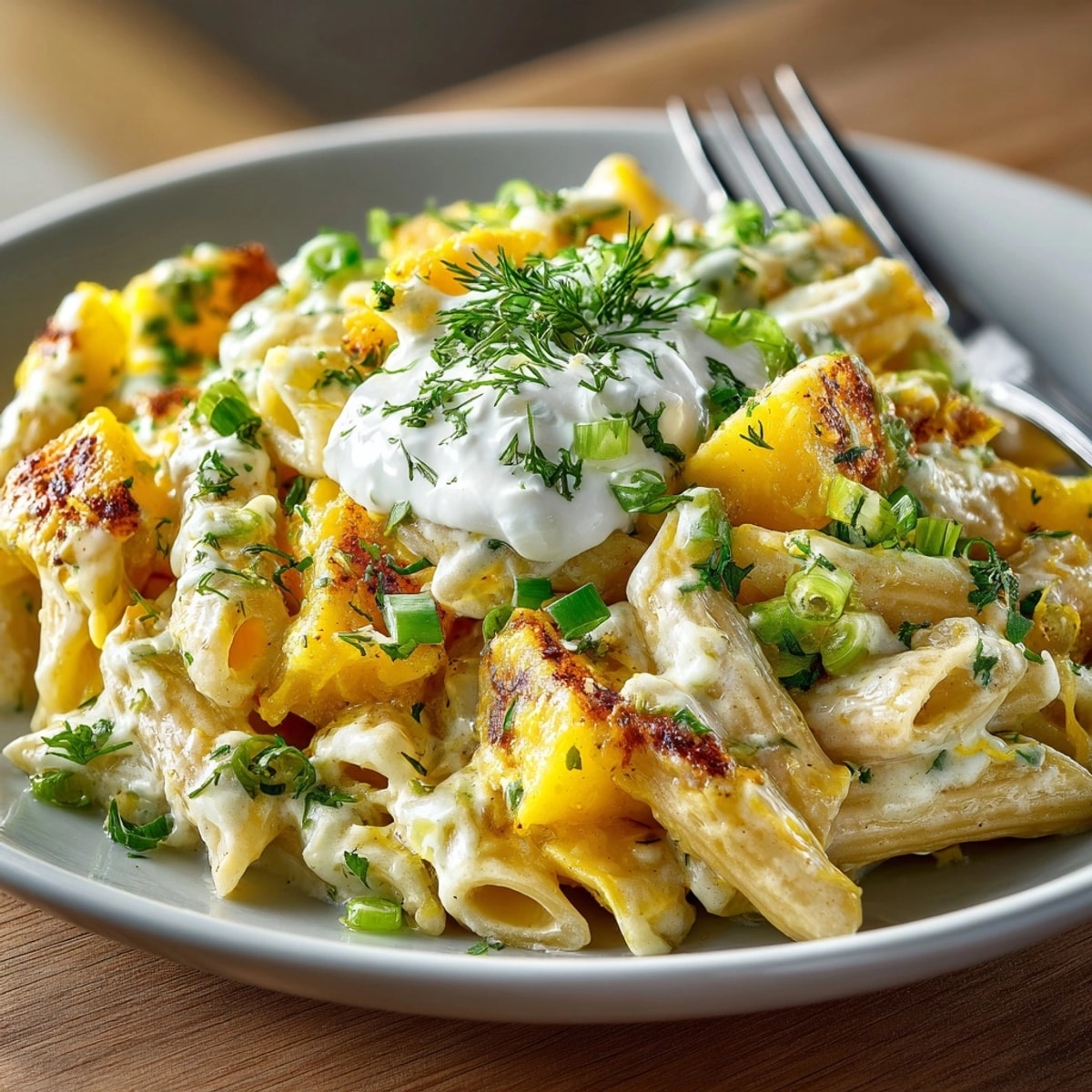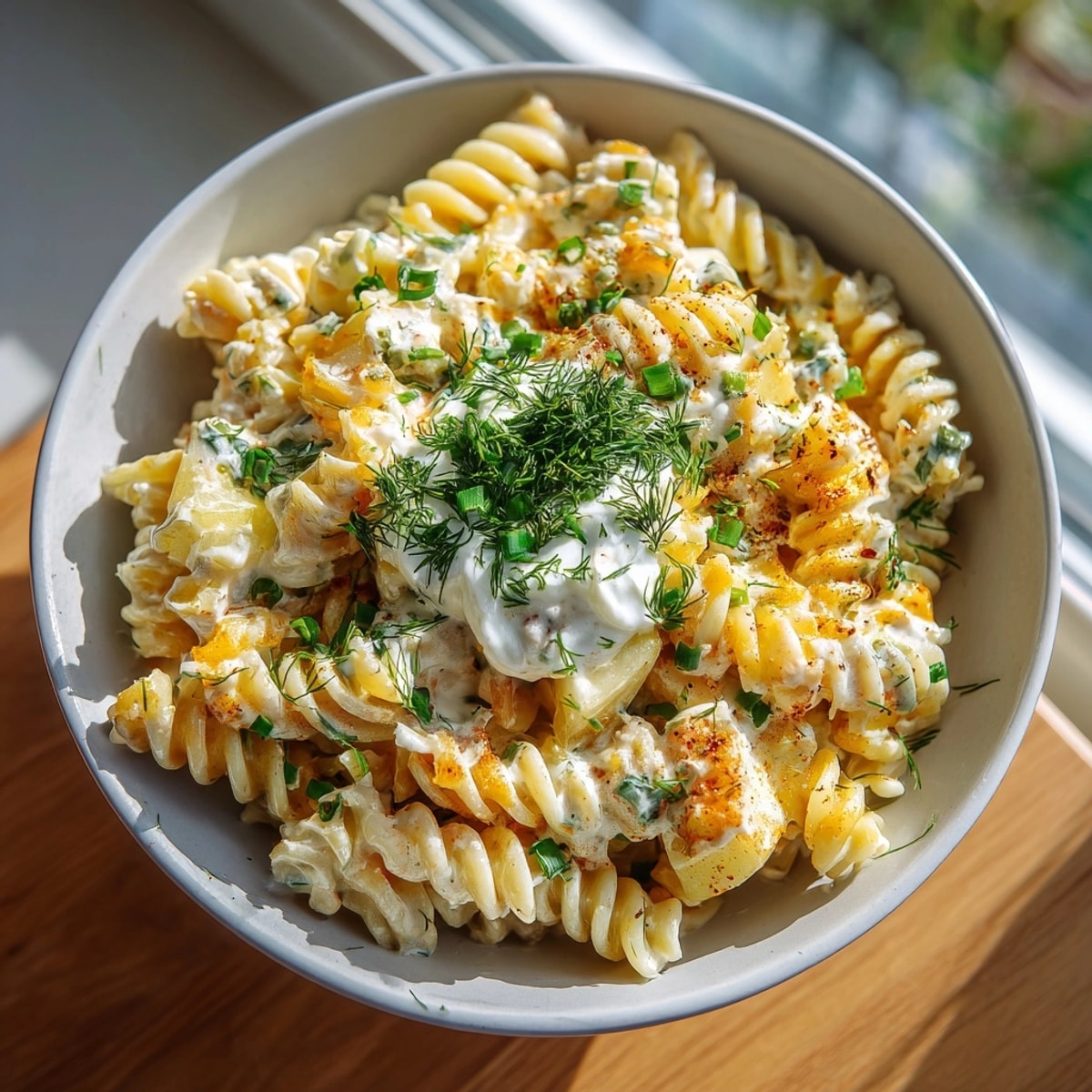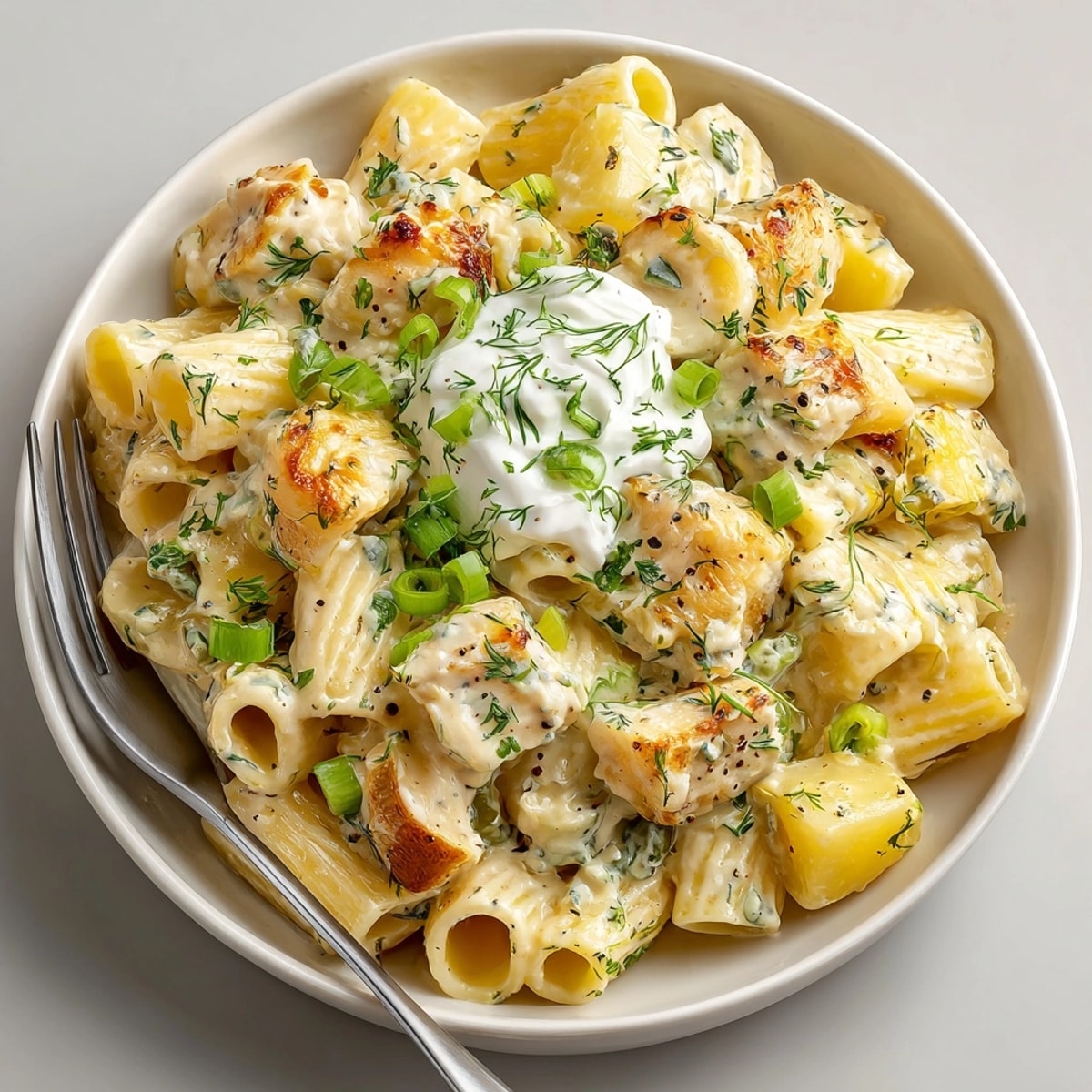 Save
Save This hearty Pickle and Cheddar Loaded Potato Pasta brings together two comfort food favorites in one delicious dish. The creamy cheese sauce coats tender pasta and potatoes while tangy dill pickles add unexpected brightness and crunch. It's a unique twist on mac and cheese that will have everyone asking for seconds.
I created this recipe during a particularly cold winter when I was craving both loaded baked potatoes and mac and cheese. My family was skeptical about the pickles at first, but now they request this dish at least twice a month, especially when we need some comfort food with a twist.
Ingredients
- 12 oz short pasta like penne or rigatoni: forms the hearty base and holds the creamy sauce perfectly
- 2 medium Yukon Gold potatoes: choose these for their buttery texture and ability to hold their shape when cooked
- 2 tbsp unsalted butter: the foundation of your roux for a silky sauce
- 2 tbsp all purpose flour: works with butter to thicken the sauce without lumps
- 2 cups whole milk: provides richness for the creamiest sauce
- 2 cups sharp cheddar cheese: splurge on a good quality aged cheddar for the best flavor
- 1/2 tsp garlic powder: adds depth without overpowering the dish
- 1/4 tsp smoked paprika: brings a subtle smoky note that complements the cheese
- 3/4 cup dill pickles: the star ingredient that adds brightness and crunch
- 1/4 cup green onions: provides fresh flavor and color contrast
Instructions
- Boil Potatoes and Pasta:
- Add diced potatoes to boiling salted water and cook for 5 minutes to give them a head start. Then add pasta to the same pot to cook together until both are tender, about 8 to 10 minutes more. This efficient method saves time and dishes while ensuring both components finish cooking simultaneously. The starch from the potatoes also adds body to the pasta water.
- Create the Roux:
- Melt butter in a large skillet over medium heat until it begins to foam but not brown. Sprinkle in flour and whisk continuously for a full minute to cook out the raw flour taste. The mixture should look like wet sand and smell slightly nutty. This foundational step ensures your sauce will be smooth and not taste floury.
- Make the Cheese Sauce:
- Pour milk into the roux very gradually while whisking constantly to prevent lumps. Continue stirring as the mixture comes to a gentle simmer and thickens enough to coat the back of a spoon, about 3 to 4 minutes. Reduce heat to low before adding cheese and seasonings to prevent the sauce from breaking. Stir until completely smooth and velvety.
- Combine Components:
- Add drained pasta and potatoes to the cheese sauce, folding gently with a wooden spoon to avoid breaking the pasta or mashing the potatoes. Ensure every piece is evenly coated in the rich sauce. Take your time with this step for the best texture and flavor distribution.
- Add the Pickles:
- Gently fold in chopped pickles and half the green onions just before serving to maintain their crunch and bright flavor. The residual heat will slightly warm the pickles without making them soft. This late addition keeps their tangy flavor distinct from the creamy sauce.
- Garnish and Serve:
- Portion the pasta into warmed bowls and top with remaining green onions, fresh parsley, and a dollop of sour cream if desired. Serve immediately while the sauce is still creamy and the pasta is at its peak texture. The contrast of temperatures and textures makes each bite more enjoyable.
 Save
Save The pickles are really the heart of this dish. The first time I made it, I doubled the amount called for because my family loves anything briny. My daughter now helps by carefully chopping the pickles into perfect little cubes, and she always sneaks a few while we cook together. Those moments in the kitchen make this recipe extra special for us.
Storage and Reheating
Store leftovers in an airtight container in the refrigerator for up to 3 days. The sauce will thicken considerably when cold. To reheat, place in a saucepan over medium-low heat with a splash of milk or cream, stirring gently until warmed through. Avoid microwave reheating if possible as it can make the sauce separate and the pasta become gummy.
Ingredient Substitutions
No Yukon Gold potatoes? Russets will work but may break down more during cooking, creating a thicker sauce. Red potatoes hold their shape well but provide less starchy creaminess.
Serving Suggestions
This pasta makes an excellent main dish alongside a simple green salad dressed with vinaigrette to balance the richness. For a complete meal, add roasted broccoli or Brussels sprouts that can benefit from a dip in the cheese sauce.
Seasonal Adaptations
Spring version Add blanched asparagus pieces and substitute some of the cheddar with goat cheese
Success Stories
Many readers have shared their successful adaptations of this recipe, including one who added crumbled bacon and jalapeños for a spicy twist that was a hit at their potluck. Another turned it into a make-ahead casserole by transferring the finished pasta to a baking dish, topping with buttered breadcrumbs, and baking until golden.
 Save
Save This loaded potato pasta is a delightful blend of creamy, tangy, and savory flavors, perfect for a comforting weeknight meal or an impressive dish for guests.
Recipe FAQ Section
- → Can I use a different type of pasta?
Yes, any short pasta like penne, rigatoni, or fusilli works well for holding the creamy sauce and mix-ins.
- → What type of potatoes work best?
Yukon Gold potatoes offer a buttery texture, but you can also use russet or red potatoes if preferred.
- → How do I achieve a smooth cheese sauce?
Whisk the butter and flour into a roux first, then add milk gradually and stir until the mixture thickens before melting in cheese.
- → Can I make this gluten-free?
Use gluten-free pasta and substitute an all-purpose gluten-free flour blend for the roux to keep the sauce creamy.
- → What can I add for a spicy kick?
Substitute part of the cheddar with pepper jack cheese or add a pinch of cayenne along with the paprika.
- → Are there alternative toppings?
Try sliced jalapeños, extra pickles, or crisp fried onions for added flavor and crunch.